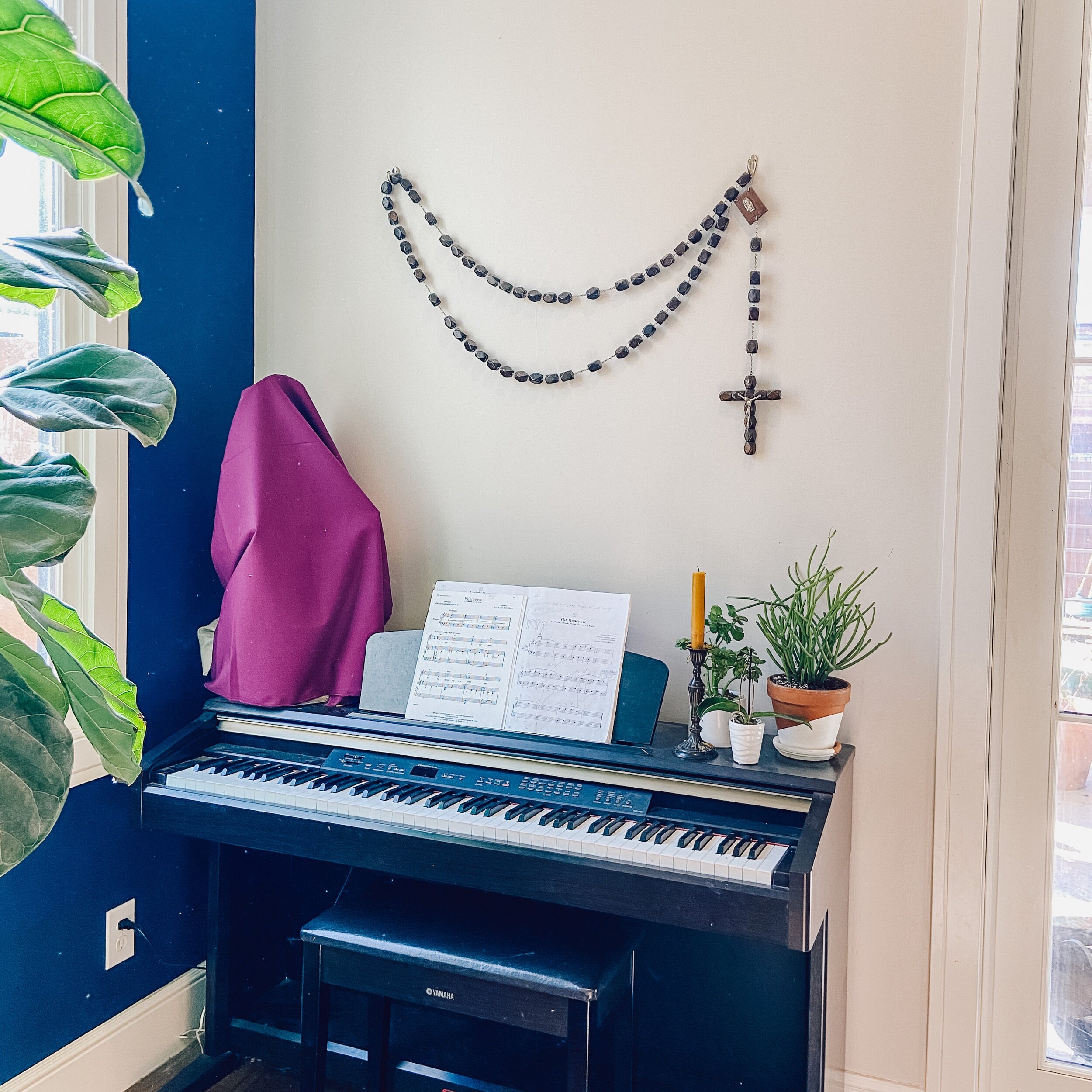The Fifth Sunday of Lent traditionally marks the beginning of Passiontide, the week before Holy Week, and Holy Week itself. Inspired by the Gospel for the Fifth Sunday of Lent, the Church veils sacred images in the sanctuary and chapel the evening before Passion Sunday.
We hear, “Jesus hid himself and went out of the temple.” (John 8:59) In an effort to unite all of our senses to this mystery, where Christ hid himself from those who would stone Him when it was not yet His time, we “hide” our sacred images and statues with purple cloth. The statues remain covered until the Gloria on Holy Saturday, and the unveiling signifies Christ’s revealing His Risen nature and victory to all!
When we work to integrate the liturgy into our own homes, we help keep our spirits recollected to God and united to the mysteries of the season. To keep in step with what is happening on the altar, many Catholic families bring the veiling of sacred pieces into the home. This is such a beautifully edifying tradition to bring into Lent, and can be very simple! You do not have to veil every single image, crucifix, icon, and statue in your whole house. One of the objectives in veiling in the home is to bring to the forefront the stark change as we draw closer to Holy Week and Good Friday, so even veiling a handful of the most prominent pieces is sufficient. If you’re wondering where to start, veil the pieces in the room that you pray in as a family most often!
Below, veiled statues during Passiontide at the Benedictines of Mary, Queen of Apostles monastery in Gower, MO, and Clear Creek Abbey in Hulbert, OK.






